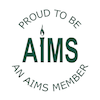Book review by Lynsey Montgomery Nurturing the Family, a Doula’s Guide to Supporting New Parents by Jacqueline Kelleher is available from Praeclarus Press in the US, or local bookstores/Amazon in your own country. When I first saw “Nurturing the family, a doula’s guide to supporting new parents” on offer for review I just knew this…
Book Reviews
Nurturing Birth Book Review: The AIMS Guide to Giving Birth to Your Baby
Book review by Natalie Stringer The AIMS Guide To Giving Birth To your Baby by Deborah Neiger is available from the AIMS website for £8. The AIMS Guide to Giving Birth to you Baby is a fantastic resource for expectant parents who have maybe not yet explored antenatal education. The contents pages towards the front…
Nurturing Birth Book Review: Covid Babies: How Pandemic Health Measures Undermined Pregnancy, Birth and Early Parenting
Book Review by Dr Mari Greenfield Covid Babies: How Pandemic Health Measures Undermined Pregnancy, Birth and Early Parenting by Amy Brown is published by Pinter and Martin and costs £12.99 Those who became parents during the pandemic have experienced pregnancy, birth, and perinatal loss in a way that those of us who became parents before…
Nurturing Birth Book Review: Dynamic Positions in Birth
Book Review by Sally Carter Dynamic Positions in Birth (2nd edition) by Margaret Jowitt is published by Pinter and Martin and costs £12.99 Dynamic Positions in Birth was an informative and at times compelling read. As a doula, I understand the physiology of childbirth and the relevance of active, upright positions during labour and birth….
Nurturing Birth Book Review: Labour of Love: The Ultimate Guide to being a Birth Partner
Book Review by Rahima Ahmed The Labour of Love: The ultimate guide to being a birth partner by Sallyann Beresford is published by Dandelion Publishing and is available from good book outlets. With over twenty years’ worth of experience supporting pregnancies in a variety of capacities including working as Doula, Antenatal Yoga Teacher, Sleep Consultant…
Read a (birth) book day!
Enjoy some of Nurturing Birth’s top doula book recommendations! Fancy settling yourself down with a good read? Wanting to know what pregnancy or birth book to treat yourself with? Thinking of expanding your doula library? Look no further – Nurturing Birth has gathered a list of some utterly gorgeous books that every doula and doula…






